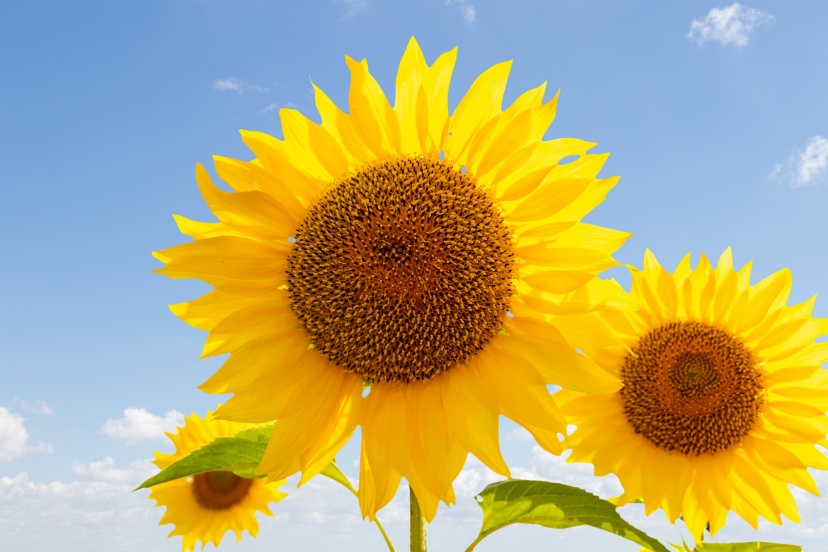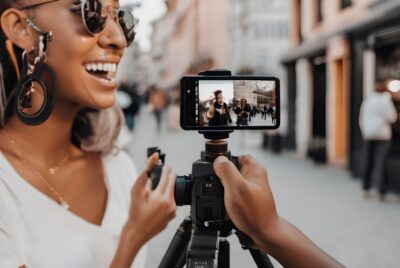Sunflower Photography: Exploring the Beauty
As a passionate enthusiast of sunflower photography, I am thrilled to share with you the secrets of capturing the stunning beauty of these golden blooms. Sunflowers symbolize joy, vitality, and warmth, making them a delightful subject to photograph. In this article, I will guide you through the process of taking remarkable sunflower photographs, from choosing the right photo gear and location to mastering composition techniques and editing your images.
Introduction to Sunflower Photography
Sunflowers possess a unique charm that captivates photographers and nature lovers alike. Their vibrant yellow petals and striking patterns make them a perfect subject for creating visually appealing and captivating images. Whether you’re a beginner or an experienced photographer, sunflower photography offers endless possibilities for artistic expression and storytelling.
Choosing the Right Gear
To capture stunning sunflower photographs, it’s essential to have the right gear. While professional cameras and lenses can enhance the quality of your images, even a smartphone with a capable camera can produce impressive results. The key is to understand the capabilities of your equipment and make the most of it.
Finding the Perfect Location
Sunflower fields are enchanting locations that provide a breathtaking backdrop for your photographs. Research local farms, gardens, or parks that cultivate sunflowers and inquire about visiting opportunities. Keep in mind that sunflowers bloom during specific seasons, so plan your photography outings accordingly to capture them in full glory.
Capturing Sunflowers in Different Lighting Conditions
Lighting plays a crucial role in photography, and sunflowers are no exception. Experimenting with different lighting conditions can yield diverse and striking results. From soft golden light during the golden hour to dramatic shadows under the midday sun, each lighting situation offers a unique atmosphere to showcase the beauty of sunflowers.
Utilizing Composition Techniques
Composition is the art of arranging elements within a photograph to create a visually pleasing and engaging image. By utilizing various composition techniques, you can transform your sunflower photographs into captivating visual stories.
Rule of Thirds
The rule of thirds is a fundamental composition principle that involves dividing your frame into a 3×3 grid. Positioning the main elements of your photograph along the intersecting lines or at their intersections creates a more balanced and visually appealing composition.
Leading Lines
Leading lines are elements within a photograph that guide the viewer’s eye toward the main subject. Incorporating natural or artificial leading lines in your sunflower photographs, such as paths or rows of flowers, can add depth and guide the viewer’s gaze through the image.
Depth and Perspective
Creating a sense of depth and perspective can make your sunflower photographs more immersive and engaging. Experiment with different angles, viewpoints, and focal lengths to add a three-dimensional feel to your images.
Highlighting Details and Textures
Sunflowers are renowned for their intricate details and textures, offering a plethora of opportunities for close-up shots and macro photography.
Macro Photography
Macro photography allows you to explore the mesmerizing details of a sunflower, from the delicate petals to the intricate patterns of the center. Use a macro lens or extension tubes to get up close and reveal the hidden beauty of these magnificent flowers.
Close-Up Shots
Even without specialized macro equipment, you can capture compelling close-up shots of sunflowers. Focus on specific details like the texture of the petals, the play of light and shadow, or the interaction between the flower and a visiting insect. These close-up shots can convey the intricate beauty and delicate nature of sunflowers.
Embracing the Sunflower Season
Sunflower photography offers a unique opportunity to embrace the beauty of a specific season. Explore different angles, lighting conditions, and perspectives to capture the essence of the sunflower season. Experiment with wide shots to showcase the vastness of sunflower fields or intimate close-ups to capture the individuality of each flower.
Editing and Enhancing Sunflower Photographs
Post-processing is a crucial step in unleashing the full potential of your sunflower photographs. Through editing, you can refine colors, enhance textures, and create a final image that truly reflects your creative vision.
Selecting the Best Shots
After a day of capturing sunflower photographs, it’s time to review your images and select the best ones for further editing. Look for images that evoke emotion, tell a story, or exhibit exceptional composition. Being selective ensures that your final collection represents your best work.
Adjusting Exposure and Colors
During the editing process, you can fine-tune exposure, contrast, and color balance to enhance the visual impact of your sunflower photographs. Pay attention to preserving the natural colors of the flowers while emphasizing their vibrancy and warmth.
Enhancing Textures and Contrast
Emphasizing the textures and contrast in your sunflower photographs can make them more visually compelling. Through careful adjustments in editing software, you can bring out the intricate details of the petals, enhance the interplay of light and shadow, and create a more dynamic and captivating image.
Sharing and Showcasing Your Sunflower Photos
Once you have captured and edited your stunning sunflower photographs, it’s time to share and showcase your work. Here are a few avenues to consider:
Social Media Platforms
Share your sunflower photographs on platforms like Instagram, Facebook, or Flickr to reach a wider audience and connect with fellow photography enthusiasts. Engage with the community, learn from others, and let your images inspire and evoke admiration.
Creating an Online Portfolio
Curate a collection of your best sunflower photographs and create an online portfolio or personal website. This allows you to showcase your work in a more professional and organized manner, making it easier for potential clients or collaborators to discover your talent.
Entering Photography Contests
Participating in photography contests focused on nature or floral themes can provide an opportunity to gain recognition and exposure for your sunflower photographs. Research reputable contests and submit your most striking images for a chance to win accolades and showcase your skills.
Conclusion
Sunflower photography is an incredible journey that allows us to capture the captivating beauty and unique character of these golden blooms. By understanding the nuances of composition, exploring different lighting conditions, highlighting details and textures, and embracing the sunflower season, we can create remarkable images that evoke joy and inspire others. So, grab your camera, immerse yourself in the sunflower fields, and let your creativity blossom.
FAQs
1. Can I capture stunning sunflower photographs with a smartphone camera?
Absolutely! While professional cameras offer more control and advanced features, smartphones with capable cameras can still produce impressive results. Focus on composition, lighting, and post-processing techniques to create stunning sunflower photographs with your smartphone.
2. When is the best time to photograph sunflowers?
The best time to photograph sunflowers is when they are in full bloom, which varies depending on your location and the specific variety of sunflowers. Typically, sunflowers bloom during the summer months, so plan your photography outings accordingly.
3. What are some recommended camera settings for sunflower photography?
For sunflower photography, start with a low ISO setting to minimize noise, a moderately fast shutter speed to freeze any gentle movements, and an aperture that allows for a balance between sharpness and depth of field. Adjust these settings based on the available light and desired creative effects.
4. How can I make my sunflower photographs stand out from the rest?
To make your sunflower photographs stand out, focus on composition, lighting, and capturing unique perspectives. Experiment with different angles, use leading lines, and incorporate creative elements to add interest and a personal touch to your images.
5. What are some post-processing tips for enhancing sunflower photographs?
During post-processing, pay attention to adjusting exposure, colors, and enhancing textures to bring out the best in your sunflower photographs. Use software tools like Adobe Lightroom or Photoshop to fine-tune the details and create a final image that reflects your artistic vision.
Further reading
Check out our other relevant articles:
Macro Photography: A Beginner’s Guide to Capturing Tiny Wonders
.




